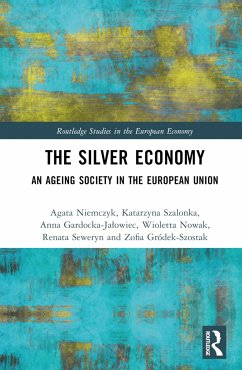The definition of "old" has evolved intensively over the years due to demographic changes, and the ageing population is one of the most frequently discussed issues in recent decades. The profile of the 21st century senior is completely different from the senior in the second half of the 21st-century senior is completely different from the senior in the second half of the 20th century, not to mention earlier periods in history. As an increasing group of benefactors of human activity, they create demand for products and experiences. The system of goods and services that aims to leverage their purchasing potential and satisfy their consumption needs, including living, health, tourism, cultural, information, and communication needs, has been referred to as the so-called Silver Economy. The book reviews the phenomenon of ageing of the EU's population over 50. It also presents a multidimensional view of the potential for the development of this group's economic, social, medical, family, personal and technological demand in the early 21st century.
The book analyses the market behaviour of seniors and argues that the Silver Economy will grow in importance and profitability every year in various areas, both public and private. This includes health, finance, employment, leisure and well-being, education, and the use of digital tools.
This publication is recommended for policymakers and business players who are considering how to achieve economic development through the growing and changing demand of the ageing population. For the world is now facing a challenge that no community has ever faced before - the coexistence of a long-lived population on the one hand and the growing popularity of digital technologies on the other.
Chapter 4 of this book is available for free in PDF format as Open Access from the individual product page at www.routledge.com. It has been made available under a Creative Commons Attribution-Non Commercial-No Derivatives (CC-BY-NC-ND) 4.0 license. The publication was financed by a subsidy for the University of Wroclaw, Funds for the "Excellence Initiative - Research University" program, a subsidy for the University of Bialystok and a grant from the Krakow University of Economics (057/ ZZE/2022/POT).
The book analyses the market behaviour of seniors and argues that the Silver Economy will grow in importance and profitability every year in various areas, both public and private. This includes health, finance, employment, leisure and well-being, education, and the use of digital tools.
This publication is recommended for policymakers and business players who are considering how to achieve economic development through the growing and changing demand of the ageing population. For the world is now facing a challenge that no community has ever faced before - the coexistence of a long-lived population on the one hand and the growing popularity of digital technologies on the other.
Chapter 4 of this book is available for free in PDF format as Open Access from the individual product page at www.routledge.com. It has been made available under a Creative Commons Attribution-Non Commercial-No Derivatives (CC-BY-NC-ND) 4.0 license. The publication was financed by a subsidy for the University of Wroclaw, Funds for the "Excellence Initiative - Research University" program, a subsidy for the University of Bialystok and a grant from the Krakow University of Economics (057/ ZZE/2022/POT).

